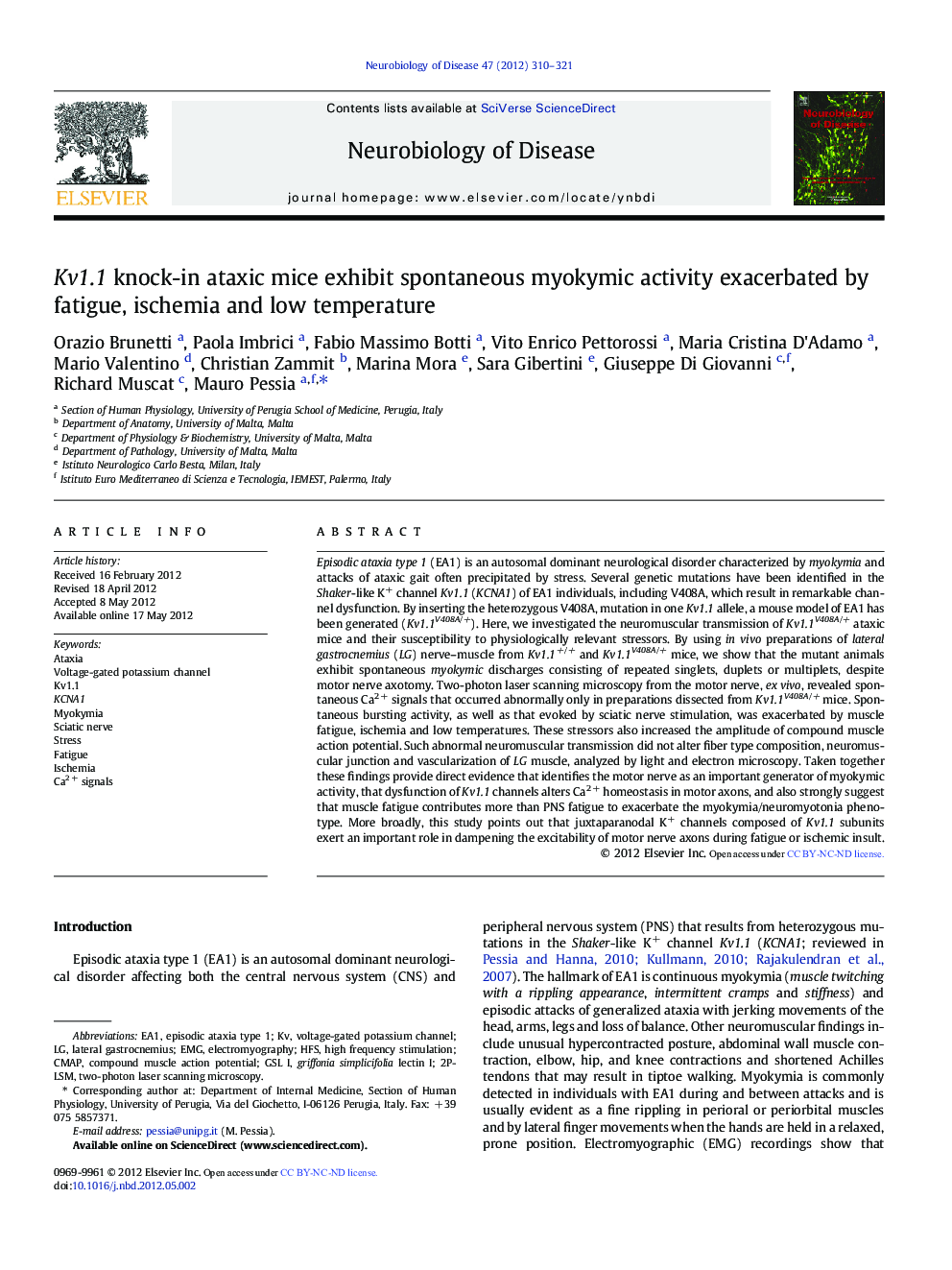| کد مقاله | کد نشریه | سال انتشار | مقاله انگلیسی | نسخه تمام متن |
|---|---|---|---|---|
| 6022774 | 1580679 | 2012 | 12 صفحه PDF | دانلود رایگان |

Episodic ataxia type 1 (EA1) is an autosomal dominant neurological disorder characterized by myokymia and attacks of ataxic gait often precipitated by stress. Several genetic mutations have been identified in the Shaker-like K+ channel Kv1.1 (KCNA1) of EA1 individuals, including V408A, which result in remarkable channel dysfunction. By inserting the heterozygous V408A, mutation in one Kv1.1 allele, a mouse model of EA1 has been generated (Kv1.1V408A/+). Here, we investigated the neuromuscular transmission of Kv1.1V408A/+ ataxic mice and their susceptibility to physiologically relevant stressors. By using in vivo preparations of lateral gastrocnemius (LG) nerve-muscle from Kv1.1+/+ and Kv1.1V408A/+ mice, we show that the mutant animals exhibit spontaneous myokymic discharges consisting of repeated singlets, duplets or multiplets, despite motor nerve axotomy. Two-photon laser scanning microscopy from the motor nerve, ex vivo, revealed spontaneous Ca2Â + signals that occurred abnormally only in preparations dissected from Kv1.1V408A/+ mice. Spontaneous bursting activity, as well as that evoked by sciatic nerve stimulation, was exacerbated by muscle fatigue, ischemia and low temperatures. These stressors also increased the amplitude of compound muscle action potential. Such abnormal neuromuscular transmission did not alter fiber type composition, neuromuscular junction and vascularization of LG muscle, analyzed by light and electron microscopy. Taken together these findings provide direct evidence that identifies the motor nerve as an important generator of myokymic activity, that dysfunction of Kv1.1 channels alters Ca2Â + homeostasis in motor axons, and also strongly suggest that muscle fatigue contributes more than PNS fatigue to exacerbate the myokymia/neuromyotonia phenotype. More broadly, this study points out that juxtaparanodal K+ channels composed of Kv1.1 subunits exert an important role in dampening the excitability of motor nerve axons during fatigue or ischemic insult.
⺠Kv1.1V408A/+ mice recapitulate the spontaneous and stress-induced neuromuscular hyper-excitability of EA1. ⺠The motor nerve is an important generator of myokymic activity. ⺠Dysfunction of Kv1.1 channels alters Ca2+ homeostasis in motor axons that likely contributes to myokymic activity ⺠Muscle fatigue contributes more than PNS fatigue to exacerbate myokymia/neuromyotonia. ⺠Juxtaparanodal K+ channels composed of Kv1.1 subunits tone down nerve excitability during fatigue or ischemic insult.
Journal: Neurobiology of Disease - Volume 47, Issue 3, September 2012, Pages 310-321